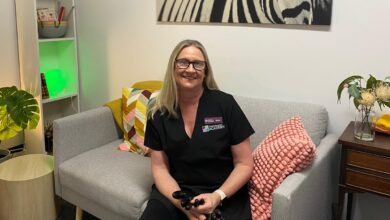Apartment style living in aged care: a test-and-learn concept

There has been a strong push towards smaller-scale, home-like accommodation in aged care in recent years.
Many consumer bodies promoted the idea, highlighted by the Royal Commission into Aged Care, and it has been widely discussed in the industry.
We have trialled apartment-style facilities and recently conducted an extensive review.
We are sharing this review in the spirit of collaboration to share with the broader industry an understanding of some of the benefits and challenges we faced.
The evaluation of this new model of care has highlighted that, whilst there are some positive elements, there are also important considerations for an aged care provider to consider before heading down the path of apartment-style living.
As chief executive of Benetas, Victoria's leading not-for-profit aged care provider, I can share that we would not extend the model more broadly in its current form without significant modifications.
We would need to strike a better balance between providing alternative accommodation choices and having a sustainable model.
In September 2016, Benetas opened St Paul's Terrace, a purpose-built facility called the New Model of Care, with ten eight-bed apartments and communal dining, lounge and kitchen areas.
St Paul's has state-of-the-art features, such as floor sensors and voice-activated technology, dedicated rostering of team members and a bright modern design.
This move to apartment-style care was a response to extensive feedback from our clients and their families and our research into alternative models of care.
The overwhelming experience has been positive for our residents.
The apartment-style model was much sought after by clients and their families, and occupancy rates have been high since it opened.
Walking through St Paul's, my first impressions are fantastic.
It's a beautiful setting, modern and bright.
For anyone familiar with aged care, the change from long corridors with many single rooms to small, cosy apartments looks appealing.
But one of the first things that we noticed was that it was hard to get a sense of the home's life and how residents interact.
We have found that many of our residents opted to spend more time in their apartments and less in communal areas, such as cafes, libraries and sitting rooms.
Likewise, team members mostly spent their time away from the common areas, caring for our residents in their apartments.
In 2018, our dedicated research team reviewed the St Paul's apartment concept over three months, comparing it with one of our more traditional facilities, St George's, and looking at the experience for carers and residents and the broader business model.
The evaluation was based on observations, questionnaires, interviews and focus groups with 68 team members, visitors and residents.
Supporting greater connection between residents and workers was identified as one of the review's key opportunities.
Many of the team members at St Paul's interviewed for the evaluation reported impacts on the availability of mentoring opportunities, challenges with scheduling breaks and logistical concerns with supporting residents whose care needs had evolved and increased over time.
This feedback was invaluable to us in refining the model.
For example, since implementation, we have reviewed the process for carers working alone in apartment-style facilities, especially when they need extra support from another team member.
We also needed to refocus our standard procedures to create stronger connections between our team members, as the physical layout of the concept meant there was less interaction and fewer opportunities to get quick advice from a colleague.
The evaluation also found that some residents were perceived as becoming overly reliant on their carer by other residents living in closer proximity and had greater visibility of the time spent per resident.
Sometimes, when a carer spent more time with a resident who required additional care, it caused unnecessary resentment and a heightened emotional environment.
The shared apartment model also meant that residents had to adjust to different personalities and behaviours whilst living in close proximity and felt unsettled by those they found loud and disruptive.
The model of dedicated rostering with the same team members working in the same apartment most of the time was popular with residents who enjoyed the familiarity but also caused some unintended consequences and continuity challenges.
In providing care, team members got to know the residents comprehensively and understand the small details of their routine that make all the difference.
However, when carers were unwell or on leave, residents felt they needed to explain their preferences again, which was a source of frustration.
Carers also felt that managing challenging behaviours consistent with the same residents was more intense.
While St Paul's was purpose-built and is modern and airy, some residents and team members described it as hotel-like rather than homely.
There were also some concerns from team members about the new technology, which they felt was cumbersome and, in some instances, took longer than usual to perform simple tasks like recording blood pressure.
The evaluation also highlighted financial implications, given that the staffing model was far more costly than that of a traditional aged care home setting.
For example, additional shifts were required to maintain the one carer per apartment model standard.
More catering hours were also needed to deliver meals to apartments rather than as part of a communal dining experience.
As residents' health needs grew, care costs increased significantly to manage their evolving needs.
St Paul's concept also reiterated the importance of clearly communicating with residents and families about the day-to-day realities of what apartment-style living would involve.
For example, we worked with our residents and their families to share that, at times, it may feel like there isn't a carer around because they were not in the communal area but were providing assistance in a nearby apartment.
We also shared that any personality clashes between residents could feel heightened when living together in apartments rather than spread out in a more traditional facility.
To mitigate some of these concerns, we were careful to match people entering our care to ensure they shared apartments with others of similar experiences and lifestyles.
We also introduced a 'floater' carer or small teams of dedicated team members to help with accessibility, reduce residents' reliance on individual carers, improve communication and make it easier for team members to get advice and support when needed.
So what is the way forward?
At this stage, Benetas will not be implementing the apartment-style model as it currently exists.
But we have learned from our experience and taken on those lessons to continuously improve and tailor the care we provide for our residents.
We plan to take the aspects of the apartment model that worked well for our residents and reflect this in the built environment.
We have also captured the experience of our residents and team members so that our communal spaces strike the right balance between being large enough to cater to whole facility events and small enough to provide a home-like, welcoming space.
Over the past few years, we have had many enquiries and visits from other aged care organisations considering the apartment-style model and wanted to hear about our experience.
We've always been upfront about the challenges we've had to overcome to create the best possible experience for our residents.
In the same way, we are sharing the results of this review so that others in the industry can learn from our experience and consider this alternative model with eyes open, fully aware of the complexity and mitigations needed to deliver the proper care.
Sandra Hills is Chief of Benetas, a not-for-profit aged care provider located in Victoria.
Email: [email protected]






Very appreciative of you sharing this information, valuable when considering new builds
Thanks for sharing the results of this review. Truly appreciate the level of openness.
I appreciate the courage demonstrated by your organisation to move forward and attempts in trialling different accommodation, staffing and care models in the pursuit of meeting resident and staff needs amidst evolving compliance challenges.
Perhaps a forum of other experiences in the future will inform government expectations to a realistic compliance and collaborative process to effect change and sustainability in Australian aged care residential and community care settings
Thank you